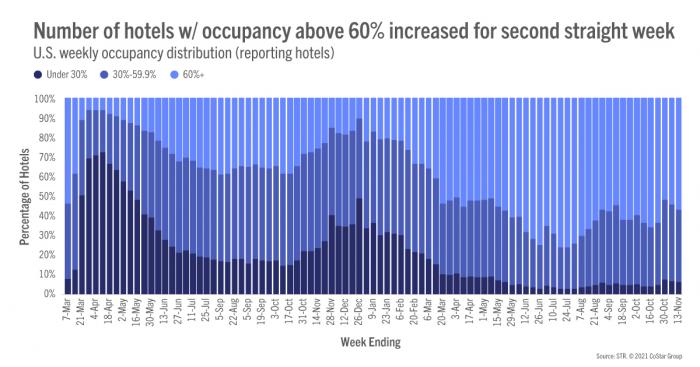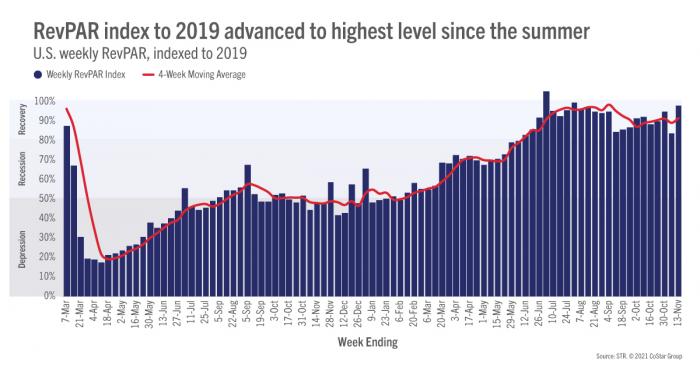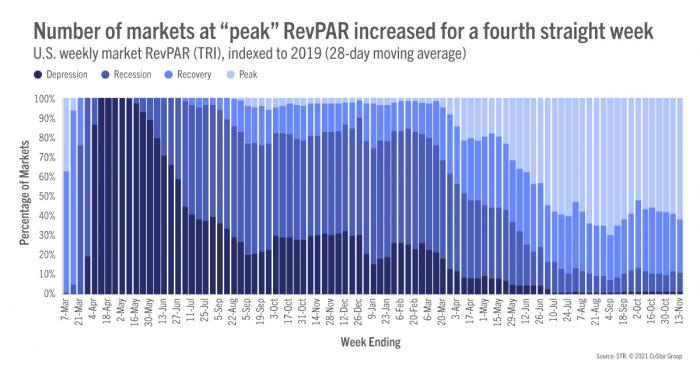Note: Due to the Thanksgiving holiday, the next edition of the Market Recovery Monitor will not be published until 3 December.
The U.S. hotel industry saw its largest week-over-week demand gain since early October with 704,000 more room nights sold for the week ending 13 November 2021. Weekly demand has increased in 21 of the past 33 weeks and the most recent week’s gain was the 10th largest in that span. With the increase, occupancy advanced to 61.6%, up 1.9 percentage points from the previous week. Compared with 2019, occupancy indexed at 96, which was the highest level since early July. Average daily rate (ADR) also improved, up 1.3% week on week, to a level that was three percent higher than what it was in 2019. As a result, revenue per available room (RevPAR) strengthened by 4.5% in the week and reached its best 2019 comparison since August.




